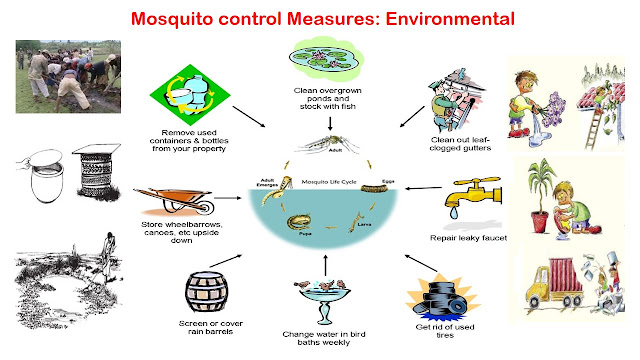Spotters in "Hospital Waste Management" for CFM & MPH students
As per “Bio-medical Waste Management Rules, 2016”
1. Yellow Bin/ Bag:
Type of Bag/ Container used:
Non-chlorinated plastic bags
Type of Waste:
1. Human Anatomical Waste
A. Tissues, organs, body parts
B. Foetus, Umbilical stump, placenta
2. Animal Anatomical Waste: Tissues, Organs, body parts
3. Soiled Waste: items contaminated with blood and body fluids
A. Dressings, sponges, gauze
B. Plaster casts
C. Cotton swabs
D. Blood bags
E. Infected gowns, mask, shoe covers, cap
4. Expired or Discarded Medicines: including antibiotics (except cytotoxic)
5. Chemical Waste:
A. Discarded disinfectants, Cleaning agents
B. X-ray film developing liquid, Infected secretions
C. Aspirated body fluids, Liquid from laboratories
6. Microbiology, Biotechnology, and other clinical lab waste
7. Chemical Liquid Waste
Yellow bin/ bag with the cytotoxic label:
1. Used, discarded, and expired cytotoxic drugs whether in plastic vaccutainers, syringes, glass vials, ampoules, glass bottles. The container is not the determining factor in the case of the segregation of cytotoxic wastes.
2. All items used during preparation and administration of cytotoxic drugs (eg: glass and plastic bottles, ampoules, vials, iv sets, gloves, syringes without needle, dressing, cotton swabs, etc.)
Treatment/Disposal options:
Incineration or Plasma pyrolysis or deep burial*
2. Red Bin/ Bag:
Type of Bag/ Container used:
non-chlorinated plastic bags or containers
Type of Waste:
Contaminated Waste (Recyclable) or All infected plastic recyclable waste:
Treatment/Disposal options:
3. Blue Bin/ Cardboard Box:
Type of Bag/ Container used:
Cardboard boxes with blue colored marking / blue colored non-chlorinated plastic bags or containers
Type of Waste:
Treatment/Disposal options:
4. White Bin/ Translucent Box:
Type of Bag/ Container used:
Type of Waste:
Treatment/Disposal options:
5. Black Bin/ Bag:
Type of Bag/ Container used:
Non-chlorinated plastic bags or containers.
Type of Waste:
1. General waste including food, paper waste, etc
2. Uninfected plastic wastes such a mineral water bottles
3. Uninfected disposable towel
4. Uninfected gowns, shoe covers, cap, masks
5. Covers of sterile items such as syringes etc
6. Sterillium used bottle
7. Bacillol or any other uninfected used bottle.
Treatment/Disposal options:
- Radioactive wastes
- Hazardous chemicals
- Lead-acid batteries
- Hazardous wastes
- E-Waste
- Municipal Solid Wastes
- Hazardous microorganisms, genetically engineered microorganisms, and cells
6. Hub cutter:
Important points:
- A hub cutter/ manual syringe and needle destroyer is used to destroy the disposable or auto-disable syringes after use.
- It destroys the syringe hub & needle in a single action.
- Stops reuse of needles & syringes and save healthcare professionals from needlestick injuries.
- Used to improve injection safety or to minimize needlestick injuries to prevent transmission of blood-borne infections such as Hepatitis B and HIV.
- Parts: One or two insertion holes for the syringe, One or two handles (attached to the blades which cut the syringe hub), One plastic container (into which the cutoff parts of the syringes and the needles are retained).
- How to use: The needle and the hub of the syringe are inserted into the hole of the hub cutter. The syringe is held with one hand and the other hand is used to clamp the handles until the hub is completely cut and the needle falls into the container.
- Disinfected: By autoclaving, boiling in water for at least 10 minutes or, chemical treatment for 30 minutes (using at least 1% solution of sodium hypochlorite or freshly prepared bleach solution).
- The hub cutters should be washed with at least 1% solution of sodium hypochlorite or freshly prepared bleach solution before reuse.
- Disposal: The needles buried in a safety pit & syringes sent for recycling.The needles and broken vials buried in a safety pit
- Park, K. (2019). Park's textbook of preventive and social medicine. 25th. Jabalpur, India: M/S Banarsidas Bhanot.
- Kadri AM. (2019). IAPSM's Textbook of Community Medicine. 1st. New Delhi, India: Jaypee Brothers Medical Publishers (P) Ltd.
- https://www.aiims.edu/en/departments-and-centers/central-facilities/265-biomedical/7346-bio-medical-waste-management.html
- https://www.exportersindia.com/hospitokart-continental-pvt-ltd/needle-cum-hub-cutter-3798977.htm photo credit
- https://www.indiamart.com/proddetail/laboware-needle-syringe-hub-cutter-16574798233.html photo credit
- https://nhm.gov.in/New_Updates_2018/NHM_Components/Immunization/Guildelines_for_immunization/Immunization_Handbook_for_Medical_Officers%202017.pdf











Continuously keep your urine bag beneath your bladder, which is at the level of your midsection. This will keep urine from streaming once more into your bladder from the tubing and urine bag, which could cause a disease. Additionally, don't head to sleep or take a long rest while wearing the leg bag.
ReplyDeleteIf you want to know more, Please check out here - urine bag
You've provided quite good information here about Recycle Awareness Social Platform. This is fantastic since it expands our knowledge and is also beneficial to us. Thank you for sharing this piece of writing.
ReplyDeleteImpressive and powerful suggestion by the author of this blog are really helpful to me. Pest Control Mississauga
ReplyDeleteCool
ReplyDelete